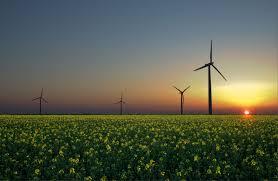No civilization, no nation, no society, no individual, can function without energy. Energy use is a chain that begins with;
- Sources, like coal, crude oil
- Conversion, from source to forms like electricity, petrol
- Consumption by society through industries, vehicles
The constant consumption of these fossils over the years, has resulted in, it being on the verge of extinction today, ultimately leading to an energy crisis; a situation when a country has a great need for fuel or electricity but does not have enough of either to provide for its citizens, as a result, energy becomes very expensive or in the extreme case, not available to everyone. Although energy crisis can be observed as a result of many factors; overconsumption, overpopulation, bad infrastructure, untapped renewable energy opportunities, wastage of energy etc.…… but, the truth of the matter is, we live in a world where there is little time for details and distinctions and its high time that we change our modus operandi and switch to renewable sources of energy.
Among the low-carbon energy supply options, the three with the biggest potential are wind power, nuclear power, and most importantly solar power. You might think that even if we imagine strong efficiency measures and smart technology-switches that halved our energy consumption, we should not kid ourselves about the challenge of supplying 60 kWh per day without fossil fuels. But as it is said that the power of thinking is more about knowing what the right way to think is and about what, a step in the right direction will always nurture fruitful results.
Around 4.5 billion years ago a star was born. We call it Sun. The solar energy that hits the earth every second is equivalent to 4 trillion 100-watt light bulbs. Solar is the prime inexhaustible energy available to all and India is one of the sun’s most favoured nations, blessed with about 10 months of sunshine in most parts of the county, receiving 4-7 kwh per square per metre per day . This is a huge number. Thus, investment in solar energy is a natural choice for India.
As of 2014, the installed capacity of solar power in India was 2,208.36 MW and it aims for 20,000 MW by 2022. In a revamped National Solar Mission programme, the union ministry of new and renewable energy has now come up with draft guidelines for setting up of 3000 MW of solar PV projects. The proposed project will be developed through association of central and state agencies along with a solar park being developed in Andhra Pradesh, as a part of this project. Recently, Tata Power Delhi, by incentivizing rooftop solar generation has also pooled in to produce 400 MW of solar electricity in the next three years with the aim of transforming the power scenario. As a cherry on the cake, the land on which solar panel towers are installed can also be used for grazing and agricultural purposes.
Although Solar farms are the way to go and India has abundant sunshine, however, there is immense competition for land resources – to harness this energy, India would need solar power stations in deserts covering an area twice the size of Greater London(about 1700 km square) but India cannot be allotting acres and acres of land just for creating solar farms, which can indeed create “a strong thermal flux” and thereby disturb biodiversity.
As a substitute to this land problem and risks associated with it, in 2015 i.e. this year, a floating solar power plant conceptualized by Kolkata based Arka Renewable Energy College will go live. This pilot project will create 10KW of electricity and requires an area of around 100 sq metres. Thus, With the solar panels being set afloat in Bengal and water canals being covered with solar panels in Gujarat, India has definitely leapfrogged.
Click here for government certification in Energy
 Stay Ahead with the Power of Upskilling - Invest in Yourself!
Stay Ahead with the Power of Upskilling - Invest in Yourself! 





21 Comments. Leave new
Akshita, this is fantastic work. Rather than only talk about problems which most people know, you have talked about solutions too. Thanks for making me aware of Arka Renewable Energy College. Your reasoning for inability to allocate land for solar energy is correct too.
Thank u so much Akul.
Good work… well done..!
Very well explained Akshita! 😀 The article was really informative.
Nice article
Wonderful post. This is indeed important. I dont really understand why people don’t realize the importance of stop misusing the resources or even over utilizing natural non renewable resources. I’m glad you took a step further for making people aware about this and I truly believe that the data provided supports the article very well and is quite useful.
The problem lies not in setting up of solar farms or harnessing solar energy efficiently, it’s the storage that’s out of our reach. It has to be used immediately which is a major problem with most natural sources of energy.
wonderful post!!!
Very well done ..u explained it too good and the topic itself catches the eye.
Such an information piece of work. Resource conservation and sustainable development is the need of the hour. good you shared this post.
Thank u so much guyss..
Divya, i do agree with you that the problem of storage is a lacking point, but i think everything improvises gradually. We need to deal with first things first and then only a step forward could be taken. And right now we are in the midst of everything.
Fabulous work! Good job..
Your have provided some amazing insights in the functionality of solar power, importantly those pertaining to India….the fact that it needs to be used correctly nd not extensively makes me think of how sustainable development is required…rather than mere development…
Very good articulation..India is endowed with a huge solar energy potential..In order to reduce its dependence on fossil fuels and is going energy crisis in the economy, the development of solar energy is a must..
Informative!! We must switch to Renewable energy soon..
nice topic! well structured 🙂
It may be costly in the beginning but it will definitely be more beneficial in the long run
The Coversion of natural resources to energy is the best option 😀
GOod work 😀
Well explained!
With the decline of natural resources, this seems the plausible way ahead of us 🙂